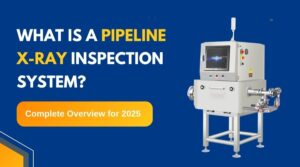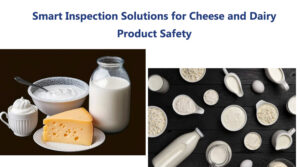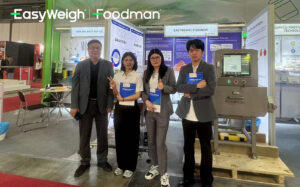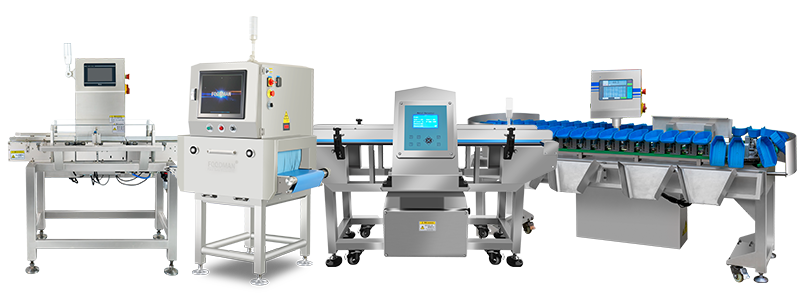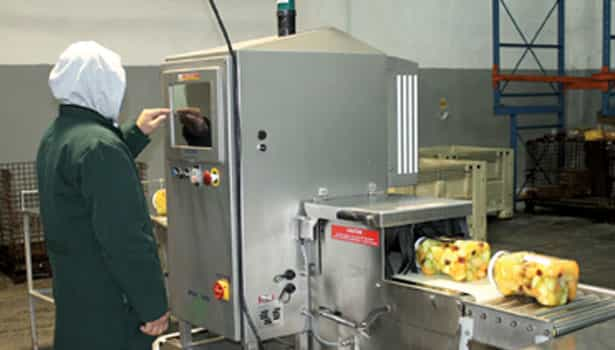
Preventing physical food contamination is crucial in every food processing business. It helps reduce or eliminate the risks of food safety hazards. Putting adequate measures in place also improves your brand’s reputation and bottom line.
Several food inspection technologies are available to help ensure the effective prevention of physical food contamination. The most prominent ones are x-ray inspection systems and metal detectors. These devices are highly efficient in detecting and removing physical contaminants from food products.
This article will discuss physical contaminants, how to avoid them, and the helpful tools for preventing physical contamination in food. Read on to find out more!
What Are the Physical Contaminants in Food Processing?
Physical food contaminant is any tangible foreign substance that enters food while processing it. Physical contamination occurs at different stages of food production. Contaminants accidentally enter food substances during raw material harvest or during food processing and distribution to final consumers. These contaminants include
- Glass
- Jewelry
- Stone, sand, ceramic
- Wood
- Plastic
- Hair
- Metal shavings, stapler, pins
- Bone
These physical hazards can hurt consumers by causing severe discomfort, choking, cuts, abrasions, or broken teeth. Likewise, physical contamination of food can negatively affect you as a manufacturer. It can negatively affect your profit margin, future product developments, and supplier relationships. In addition, it can affect your brand identity and lead to a negative consumer experience.
You need to identify physical hazards in food processing and effectively manage them. This way, you can offer dependable quality and guarantee the safety of your food products to consumers.
How To Avoid Physical Contaminants in Food Production

There are many factors responsible for physical contamination in food processing. Processing equipment, raw materials, food handlers, and other sources contribute to food contamination. A proper understanding of physical contaminant prevention will help you protect your brand’s reputation and ensure customer safety. Here are a few steps to follow:
Establish Dress Principles
The greatest asset you have as a food producer is your staff. When you establish dress principles and other safety programs for your employees, you have a better chance of preventing food hazards. Maintaining proper personal hygiene helps safeguard food substances from the dangerous contaminants on the clothing of food handlers.
Improper dress principles result in physical and other forms of contamination. As a result, you must establish and implement dress principles for your food handlers, facility managers, and other employees. These principles may include:
- Work clothing requirements
- Restraints from artificial hair wearing and excessive jewelry
- Mandatory use of gloves while on the job.
It is a vital and formidable defense line in improving food safety processes and reducing risks.
Repair and Replace Damaged Equipment
You must take good care of your old food processing equipment. Old equipment has a high chance of contaminating food when damaged or defective. Make machine maintenance a crucial part of your food management routine. Schedule regular repair and replacement of damaged equipment to prevent food contamination.
Procure Food Supply From Reputable Sources
Your team is responsible for inspecting and preparing food supplies. You shouldn’t get raw materials from suppliers who don’t examine or pre-treat the vegetables, fruits, and crops. Instead, partner with a more reliable food supplier who can offer high-quality ingredients to ensure food safety. Purchasing low-quality raw materials will only fetch more work for your food processor. It will further compromise the safety of your food products.
Proper Waste Management
You should endeavor to manage waste materials appropriately. They should be disposed of far away from your processing units. Waste products often attract different kinds of pests, which could increase the risk of contamination in food processing. As a result, you must create a comprehensive food waste management strategy that clearly shows how to collect and dispose of waste.
Use Tools or Machines to Detect the Physical Contaminants
Technological advancements have elevated food safety practices. These technologies help prevent recall risks while complying with all international food safety regulations.
In addition, the latest tools and machines make food safer for consumption and save you a lot of money. They improve food safety protocols and are vast at keeping food safe from contamination. Their ability to sense the slightest physical contaminants in food hidden from the naked eye makes them even more valuable.
Why Choose Food Metal Detector to Detect Physical Contaminants in Food?
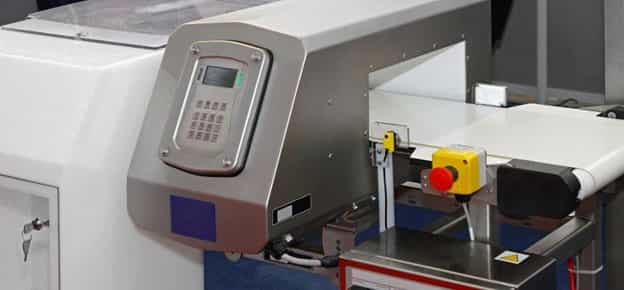
To choose the best food metal detector for your food production processes, you must understand how they operate and their benefits. Let’s consider their working principles and advantages.
Working Principles of Metal Detectors
The metal detector operates on electromagnetic induction principles. It contains one or more inductor coils that help inspect and indicate metallic objects’ presence. A transmitter coil checks the area, and an indicator coil signals the metal’s presence.
These inductor coils generate alternating magnetic fields such that when the metal contaminants come in contact with it, such metals trigger current. When you move a metal detector over a metallic object, the magnetic field emanating from the object induces a new magnetic field around the metallic object. The closer the sensor is to the metal, the more potent the magnetic field it generates.
Advantages of Metal Detectors
The following are some advantages of metal detectors:
Maximum Sensitivity for Contaminants
Advanced metal detection systems have high sensitivity that allows them to detect foreign objects in food. In the past, food processors have had difficulty handling interference from other devices. However, the recent metal detectors maintain very high resistance to interference from other devices. Therefore, they are able to detect physical contaminants more effectively.
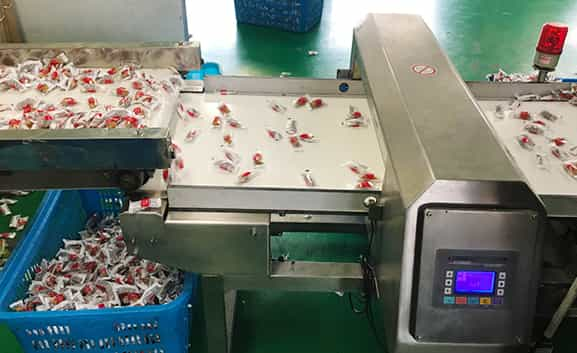
You Can Program the Detector for Certain Products
The metal detector is not so difficult to operate or configure to perform certain operations. It requires little manual adjustments for different food products in the processing line. Metal detectors generally involve easy and swift changeover, lower planned downtime, and higher productivity. Thus, they boast increased versatility and capabilities.
Low Total Cost of Ownership
When you compare the upfront cost and total cost of ownership over its lifetime, metal detection systems offer good value for money. Their upfront costs are lesser than x-ray systems. Meanwhile, metal detectors are more durable and last longer.
Suitable for Any Food Processing Stage
Metal detectors are fit for installation at any stage in the processing line. For best results, install your metal detector at the stage where you have the best chance of detecting metal contaminants. They can easily adapt to the peculiarities of your processing line, ensuring seamless detection of contaminants.
Why Choose X-Ray Inspection Systems to Detect Physical Contaminants in Food?
X-ray machines are convenient and commonly used to enhance the quality and safety of processed foods. These machines are most suitable for primary packaging because they detect more than physical food contaminants. The sensitivity of X-ray inspection systems is higher than metal detectors, making them useful for detecting products in aluminum or metalized bags. In addition, X-ray technology detects possible issues with product quality. This way, you can avoid customer complaints and negative reviews for your business.
Working Principles of X-Ray Inspection System
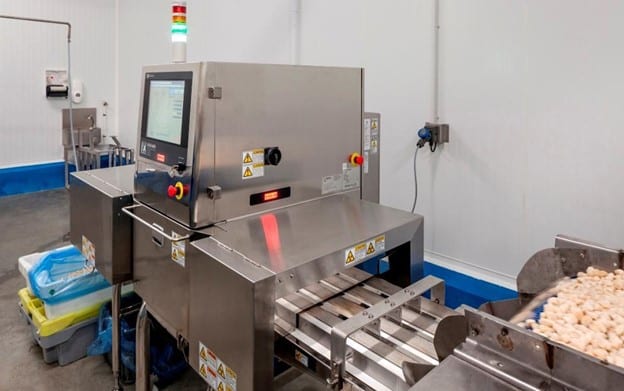
X-ray technology senses the density of the foreign body present in the food product. It consists of two primary components – the image detection system and the generator. These components provide a clear picture of the internal composition of packaged food products without hindrances.
The x-ray beam penetrates food products during an inspection process. Whenever a foreign object is present in the food, the beam from the x-ray machine loses a portion of its energy. The x-ray machine sensor often converts the energy signal into a clear picture of the food’s internal components. Therefore, physical contaminants such as metal shaving appear as a shade of grey, making it easier to tell the difference. Using x-ray machines gives you a closer look at the “in and out” of every processed food product before sending them off to final consumers.
Advantages of X-Ray Inspection System
Most food producers invest in x-ray inspection systems for enormous benefits to their food business. Here are some of these advantages:
Detects a Wide Variety of Contaminants
While x-ray inspection systems can effectively detect metallic contaminants, they can also detect an extensive list of non-metallic food contaminants. They are the best options for detecting tiny pieces of ferrous, non-ferrous, and stainless objects. Furthermore, they can also detect plastics, bone fragments, stones, wood, glass, etc. You can even use x-ray systems to inspect filling levels, missing items, or broken parts based on density differences.
Consumer Protection
Modern manufacturing processes aim to eliminate all forms of physical contaminants but fail in some specific aspects. As a result, x-ray systems are excellent remedies for protecting consumers from various physical hazards. These machines identify all physical contaminants within packaged and unpackaged food products regardless of size, location, or shape.
Quality Assurance
X-ray systems provide quality assurance by detecting physical contaminants before products are shipped to consumers. They inspect all seal integrity for trapped food, check for damaged goods, and identify broken or misplaced products. This modern food technology can multitask, performing various inline product integrity assessments at high speed in a single pass.
Brand Protection and Recall Prevention
Food companies suffer from food recalls every year. It comes with a monetary sanction and brand identity damage. Any company that suffers food recalls loses between 10 million to 100 million US Dollars in addition to the damage to the brand name and lost sales. Using an x-ray detector to inspect all your food products before leaving the factory helps protect your brand’s reputation and prevent all recall risks. It saves you from customer complaints and losses that could take years to recover.
Risk Management and Regulatory Compliance
X-ray inspection systems show your diligence as a manufacturer. They are proof that you have inspected all food safety risks and taken the necessary steps to eliminate them. In addition, the software of the x-ray machines has outstanding traceability in the production line. This enables it to identify where a contaminant entered the product.
Likewise, the x-ray inspection system helps you to adhere to the retailer’s codes of practice. More importantly, these machines ensure compliance with the Hazard Analysis and Critical Control Points (HACCP) principles and application guidelines.
Customer Trust
Most manufacturers are enthusiastic about informing their customers about how they have invested in x-ray systems. It presents them as a manufacturer that improves the quality of their products. Likewise, customers trust them to always supply quality and safe products.
Fortunately, x-ray systems have helped retain customers while improving manufacturers’ market share. It is also an avenue for getting more business opportunities with retailers.
Metal Detector Vs. X-Ray Inspection
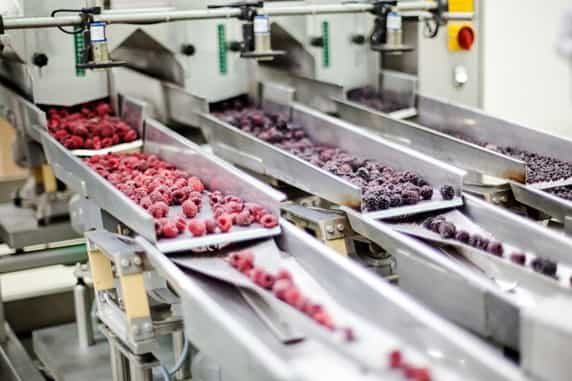
Metal detectors and X-Ray inspection systems are efficient machines that help guarantee food safety and protect consumers from food hazards. However, each device has different strengths and is suitable for specific applications. As a result, before you choose an inspection method for your food processing operations, consider the essential things.
You should evaluate the following:
- The Materials you will be inspecting
- The physical contaminants you are dealing with
- The specific production stage where inspection is most effective and efficient
These are some differences between metal detectors and x-ray inspection systems.
| Features | Metal Detector | X-Ray Inspection System |
|---|---|---|
| Detectable Materials | Metal detectors are best for detecting ferrous and nonferrous substances. | The X-Ray inspection system detects metals, bones, glass, plastics, and ceramics. |
| Durability | Metal detectors last for 10 to 20 years. | X-ray machines last for 5 to 10 years. |
| Sensitivity | Metal detectors generally sense physical contaminants like metals. | X-Rays detect product irregularities like broken products and missing items. |
| Pricing | It is very economical and easy to maintain. | It costs more than metal detectors and is quite challenging to maintain. |
| Challenges | It cannot sense the content within metal packaging except for certain metalized films. | It cannot detect certain materials like tiny glass shards less than 2mm in diameter and low-density plastics. |
| Mode of Operation | It detects metal by sensing the disturbances in a balanced electromagnetic field. | It detects contaminants through density differential. |
| Detection Diameter | It senses metal with a tiny diameter of <1.0 mm | It senses metal with a diameter of <1.0mm and solid, nonferrous contaminants with a diameter as low as <3.0 mm |
Conclusion
Physical food hazards are no less dangerous to consumers than manufacturers. The best remedy is knowing how to prevent and eradicate these contaminants that find their way into food substances. While there are several guidelines to follow, you should also invest in modern food technologies. This serves as a strategic and effective measure against food hazards. With these in place, the safety of you and your customers is guaranteed.


